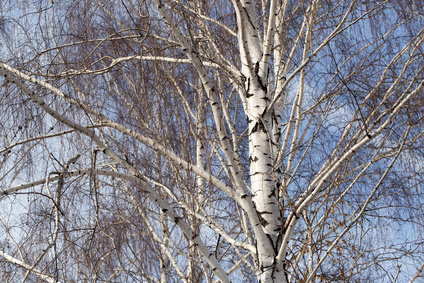Silver Birch Tree

Everything you need to know about the silver birch tree, from identification tips to typical characteristics; how to spot disease and the best way to maintain a silver birch tree.
The silver birch tree is native to the UK. It can reach 30 metres in height in maturity and has a light canopy with characteristic cascading branches. This tree is widely used to boost soil quality so that other plants can grow healthily and it does this courtesy of it deep roots that draw in otherwise inaccessible nutrients, recycling them into the soil as the leaves are shed.
General Facts
| Known as | Silver birch, bed wen |
| Latin name | Betula pendula |
| Location | UK native, Western Eurasia |
| Foliage | Deciduous |
| Lifespan | 150 years |
Characteristics
| Height | Up to 30 metres |
| Spread | 8 metres plus |
| Appearance | An elegant looking tree with characteristic cascading branches. The bark is silvery white and sheds in layers, becoming rugged and dark at the base of the trunk. A more mature silver birch will display bark with dark, diamond shaped fissures. The twigs are smooth with small, dark warts but become rough to the touch in winter. |
| Leaves | Leaves are light green in colour in spring, fading to yellow in autumn. They are small in size and triangular shaped with a toothed edge. |
| Flowers | Both the male and female flowers of the silver birch appear on the same tree. They take on the form of catkins and bloom from April to May. The male version is long and yellowy brown, hanging in groups of two to four on the tips of the shoots and giving the appearance of lambs’ tails. The female flowers are bright green and much smaller. |
| Fruit | The female catkins are wind pollinated and go on to transform to a thicker, dark crimson appearance. In the autumn a mass of miniscule seeds become airborne. |
| Found in | Gardens, woodlands, downs and heath |
Conditions
| Ideal soil | Moist but well drained, chalk, loam, clay or sand |
| Soil pH | Neutral, acid alkaline |
| Aspect | North, south, east or west facing |
| Exposure | Full sun to partial shade; sheltered or exposed |
Threats
| Pests | Sawflies, leaf-mining sawflies, aphids |
| Diseases | Rust, leaf spot |
Silver Birch Trees and Wildlife
Because the silver birch has an open canopy, it offers the ideal environment for plant life to thrive beneath, so you will often find bluebells, violets, wood sorrel, grasses, mosses and wood anemone growing under a silver birch.
In excess of 300 species of insects consider the silver birch home and a rich source of food. Aphids are drawn to the leaves which means ladybirds follow and numerous moth caterpillars such as the angle-shade, buff tip, Kentish glory and pebble hook-tip will also feast on the foliage. The seeds are favourites for birds such as the greenfinch, redpoll and siskin.
The trunk of the silver birch is much loved by woodpeckers and other hole-nesting birds.
Silver Birch Tree Symbolism and History
Birch is an important tree in folklore and mythology. The Celts considered it a symbol of renewal and purification and Scottish Highlanders would use a birch stick to herd a barren cow in order to make it fertile, or a pregnant cow so that it would bear a healthy calf.
To this day, gardeners use a birch broom to purify their gardens.
The word birch is thought to have come from the Sanskrit bhurga which means a ‘tree whose bark is used to write upon’. The poet S.T. Coleridge named it the ‘Lady of the Woods’ and it is believed that the birch forms numerous English place names including Berkhamstead and Birkenhead.
The Importance of Silver Birch Trees
The timber of the silver birch tree is heavy and robust which means it works well in furniture making and is also widely used for toy making, although it is not widely used in the UK as the trees do not grow as extensively as they do in other areas of Europe.
The bark is used for tanning leather.
Caring for a Silver Birch Tree
The silver birch tree is a low maintenance tree and doesn’t need much other than light pruning. All that really needs to be done is to remove any dead or diseased branches or any that are congested or rubbing together and preventing air flow or light penetration.
It is also good practice to remove branches that are sitting close to the ground as this will make landscaping more straightforward and allow the tree to be enjoyed as a shady haven.
When pruning or generally taking care of a silver birch tree, there are certain things to look out for. These include orange, yellow, brown, black or white pustules on leaves (leaf rust) and the dying off of branches within the crown (birch dieback).
A qualified tree surgeon will know precisely how and when to prune a silver birch tree for best results and they will also be aware of how to detect the common diseases that this tree is prone to, identifying them early on and treating them correctly so as to give the tree the best possible chance of survival.
If you have a silver birch tree that could do with some knowledgeable care and attention, why not get in touch with Tree Works? As fully qualified and highly experienced tree surgeons, we can offer detailed knowledge and skill across all aspects of tree care. For a free, no-obligation quotation, call us on 07781 416 354 or get in touch here.

